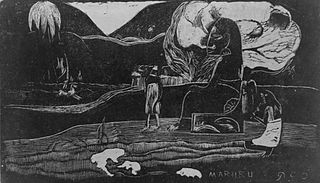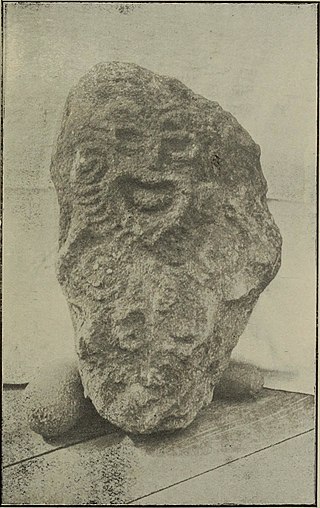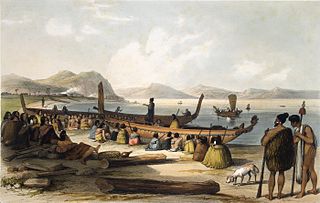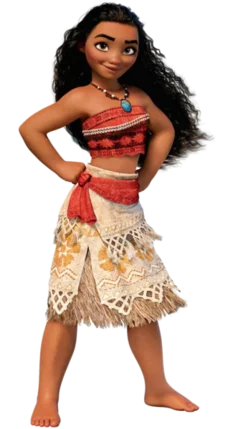Maui is one of the Hawaiian Islands.
Contents
Maui may also refer to:
Maui is one of the Hawaiian Islands.
Maui may also refer to:

Polynesian mythology encompasses the oral traditions of the people of Polynesia together with those of the scattered cultures known as the Polynesian outliers. Polynesians speak languages that descend from a language reconstructed as Proto-Polynesian – probably spoken in the Tonga and Samoa area around 1000 BC.
Māui or Maui is the great culture hero and trickster in Polynesian mythology. Very rarely was Māui actually worshipped, being less of a deity (Demigod) and more of a folk hero. His origins vary from culture to culture, but many of his main exploits remain relatively similar.

Hina is the name assigned to a number of Polynesian deities. The name Hina usually relates to a powerful female force who has dominion over a specific entity. Some variations of the name Hina include Sina, Hanaiakamalama, and Ina. Even within a single culture, Hina could refer to multiple goddesses and the distinction between the different identities are not always clear. In Hawaiian mythology, the name is usually paired with words which explain or identify the goddess and her power such as Hina-puku-iʻa (Hina-gathering-seafood) the goddess of fishermen, and Hina-ʻopu-hala-koʻa who gave birth to all reef life.

In Māori mythology, Rongo or Rongo-mā-Tāne is a major god (atua) of cultivated plants, especially kumara, a vital crop. Other crops cultivated by Māori in traditional times included taro, yams (uwhi), cordyline (tī), and gourds (hue). Because of their tropical origin, most of these crops were difficult to grow except in the far north of the North Island, hence the importance of Rongo in New Zealand.
Papa is a word used in many languages as an affectionate term for father.
Tangaroa is the great atua of the sea, lakes, rivers, and creatures that live within them, especially fish, in Māori mythology. As Tangaroa-whakamau-tai he exercises control over the tides. He is sometimes depicted as a whale.
Ta'aroa is the supreme creator god in the mythology of the Society Islands of French Polynesia. While the use of the ʻeta is appropriate given the pronunciation of his name, it is often omitted in practice, as is typically the case with Tahitian words.
In Samoan mythology, Tagaloa is generally accepted as the supreme ruler, the creator of the universe, the chief of all gods and the progenitor of other gods. Tagaloa Lagi dwelt in space and made the Heavens the sky, the land, the seas, the fresh water, the trees and the people. Samoans believed Tagaloa created nine heavens. Tagaloa's role as paramount deity in the Samoa pantheon bears similarities to the position of Ta'aroa in Tahiti and Io Matua Kore in Aotearoa New Zealand.
TI, ti, and variants may refer to:

Waka are Māori watercraft, usually canoes ranging in size from small, unornamented canoes used for fishing and river travel to large, decorated war canoes up to 40 metres (130 ft) long.

Māori mythology and Māori traditions are two major categories into which the remote oral history of New Zealand's Māori may be divided. Māori myths concern fantastic tales relating to the origins of what was the observable world for the pre-European Māori, often involving gods and demigods. Māori tradition concerns more folkloric legends often involving historical or semi-historical forebears. Both categories merge in whakapapa to explain the overall origin of the Māori and their connections to the world which they lived in.
In Māori mythology, as in other Polynesian traditions, Māui is a culture hero and a trickster, famous for his exploits and cleverness. He possessed superhuman strength, and was capable of shapeshifting into animals such as birds and worms.

In Hawaiian religion, Māui is a culture hero and ancient chief who appears in several different genealogies. In the Kumulipo, he is the son of ʻAkalana and his wife Hina-a-ke-ahi (Hina). This couple has four sons, Māui-mua, Māui-waena, Māui-kiʻikiʻi, and Māui-a-kalana. Māui-a-kalana's wife is named Hinakealohaila, and his son is named Nanamaoa. Māui is one of the Kupua. His name is the same as that of the Hawaiian island Maui, although native tradition holds that it is not named for him directly, but instead named after the son of Hawaii's discoverer.
In Samoan legend, the mythological figure Tiʻitiʻi Atalaga appears in legends very similar to those recounting the tales of the demigod Māui, found in other island cultures. In one such legend, which is almost identical to the New Zealand fire myth of Māui Tikitiki-a-Taranga, he succeeds in bringing fire to the people of Samoa after a battle with the earthquake god, Mafuiʻe. During the battle, Ti'iti'i breaks off one of Mafui'e's arms, forcing him to agree to teach him of how fire had been concealed by the gods in certain trees during the making of the world. The people of Samoa were thankful to Ti'iti'i for breaking off Mafui'e's arm, as they believed that he was less able to create large earthquakes as a result.

Māui dolphin, Maui's dolphin, or popoto is a subspecies of the Hector's dolphin —New Zealand's only endemic cetacean. Māui dolphins are only found off the west coast of New Zealand's North Island, and are now one of the rarest and smallest dolphin subspecies globally. A 2021 report issued by the New Zealand government suggests the population rests at 54 individuals, but when taking into account recent mortalities, the population could sit at fewer than 50 individuals. Both the Māui dolphin and South Island Hector's dolphin are threatened by commercial fisheries, including set-netting and trawling, recreational netting, and disease including toxoplasmosis and brucellosis. Low food availability may also be an issue for Māui dolphins, which may increase their susceptibility to climate change.

Sina and the Eel is a myth of origins in Samoan mythology, which explains the origins of the first coconut tree.

Moana is a 2016 American computer-animated musical fantasy action-adventure film produced by Walt Disney Animation Studios and released by Walt Disney Pictures. The 56th Disney animated feature film, it was directed by John Musker and Ron Clements, co-directed by Chris Williams and Don Hall, and produced by Osnat Shurer, from a screenplay written by Jared Bush, and a story by Clements, Musker, Williams, Hall, Pamela Ribon, and the writing team of Aaron and Jordan Kandell.
Moana may refer to:
Moana Nui-a-Kiwa Hinemoa Whaanga was a New Zealand swimmer and beauty pageant winner. In 1954, she became the first Māori to win the Miss New Zealand title.

Moana Waialiki of Motunui is the title character of Walt Disney Animation Studios' 56th animated feature film Moana (2016). Created by directors Ron Clements and John Musker, Moana is voiced by Hawaiian actress and singer Auliʻi Cravalho. As a toddler, she is voiced by Louise Bush. Moana is set to appear in the Disney+ sequel series Moana: The Series, which will premiere in 2024.